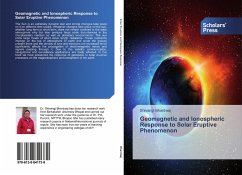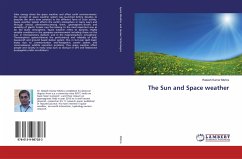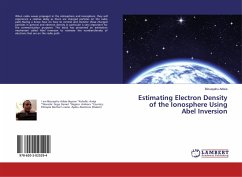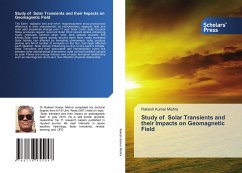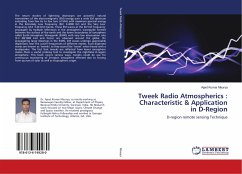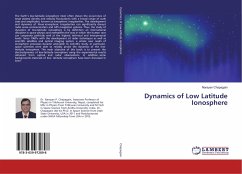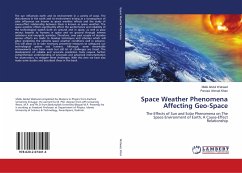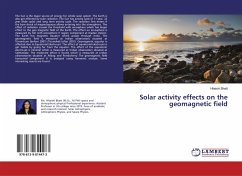
Solar activity effects on the geomagnetic field
Versandkostenfrei!
Versandfertig in 6-10 Tagen
33,99 €
inkl. MwSt.

PAYBACK Punkte
17 °P sammeln!
The Sun is the major source of energy for whole solar system. The Earth is also get affected by solar radiation. The Sun has activity cycle of 11 year, 22 year (Hale cycle) and long term activity cycle. The radiation first enters if the bow shock of magnetopause allows entering into the atmosphere. The effect of radiation crosses the threshold with ionosphere which has larger effect to the geo magnetic field of the Earth. The effect on ionosphere is measured by foE with ionospheric E region component at Ibadan station. The Earth has magnetic equator which passes through India. The geomagnetic ...
The Sun is the major source of energy for whole solar system. The Earth is also get affected by solar radiation. The Sun has activity cycle of 11 year, 22 year (Hale cycle) and long term activity cycle. The radiation first enters if the bow shock of magnetopause allows entering into the atmosphere. The effect of radiation crosses the threshold with ionosphere which has larger effect to the geo magnetic field of the Earth. The effect on ionosphere is measured by foE with ionospheric E region component at Ibadan station. The Earth has magnetic equator which passes through India. The geomagnetic field is measured at Indian observatory situated at Trivandrum (before 2001) /Tirunelveli (after 2001). Geomagnetic equator is affected due to Equatorial Electro-jet. The effect of equatorial electro-jet is get feeble by going far from the equator. The effect of the equatorial electro-jet is minimal which is measured at Indian observatory situated at Sabhawala. The moderate effect is found which is measured at Indian observatories situated at Alibag and Pondicherry. The geomagnetic field horizontal component H is analyzed using harmonic analysis. Some interesting results are found.



